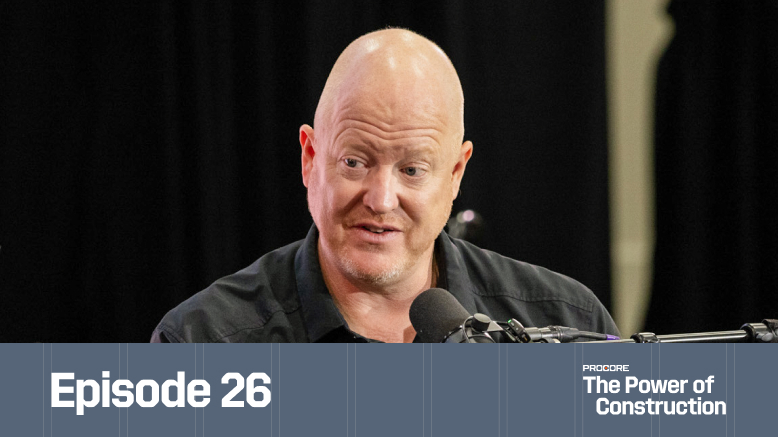— 13 min read
Revolutionizing Construction Through the RNGD Delivery Method



Last Updated Oct 13, 2025

Will Cotten
RNGD Prefab Leader
Will Cotten is the leader of RNGD Prefab, a subsidiary of RNGD, which exists to advance the construction industry forward. RNGD Prefab is a team of fabricators and craftsman who adhere to a True Builder philosophy and are implementing prefabrication deliveries, building in-house data analytics, and adopting innovative technologies. Previously as RNGD's Innovation Leader, Will Cotten incubated emerging teams, lead technology strategy, and augmented the company’s capabilities — implementing new technology and supporting the development of in-house construction analytics and prefabrication capabilities. In all his roles, Will enables RNGD to find and apply innovative solutions that advance the company’s overall mission of “building a better world.” Drawn to the firm's unparalleled drive, exemplified by a values-oriented band of team members, Will joined RNGD in 2018 as a Commercial Operations Intern. Since then, his ingenuity and unique insight have enabled him to rise to the occasion in new positions and deliver on strategic initiatives. A native of Prairieville, Louisiana, William earned his degree in Construction Management from Louisiana State University. His work ethic has revolved around the ethos of “actions not words.” He applies that same mentality as a board member for the Palmisano Foundation. He was also recognized as 2022 BuiltWorlds Leader of Tech Adoption. Aside from spending time with family and friends, William indulges in a love for nature and the human experience. He indulges in content on evolutionary biology, human psychology, philosophy, spirituality, and has a soft spot for New Orleans history. And when he’s not in the office, you’ll likely find him outdoors — on a long walk, golfing, hiking, camping, even gardening and cutting the grass. Will was named to the 2022 BuiltWorlds Adoption Top 50 List. The people within this list are all leading the way towards innovation for their companies and the industry overall.

Nick Moldaner
Chief Operating Officer
As Chief Operating Officer of RNGD, Nick Moldaner has been instrumental in the company's dynamic growth since its inception in 2013, overseeing key areas from preconstruction to project execution and cultivating its renegade culture. Drawing on a lifelong passion for construction that began at age 12, Nick thrives in high-intensity environments, applying a cool-under-pressure approach to support division leaders and executives in maintaining peak performance. His career, which includes experience as a project manager at Woodward Design+Build, reflects a drive to challenge the status quo and deliver lasting value for customers. Beyond his leadership at RNGD, Nick is deeply committed to mentoring the next generation of industry leaders, serving on advisory councils and inspiring frontline managers to cultivate their personal and professional growth.

James Hamilton
Writer & Producer
85 articles
James Hamilton is a writer based in Brooklyn, New York with experience in television, documentaries, journalism, comedy, and podcasts. His work has been featured on VICE TV and on The Moth. James was a writer and narrator for the show, VICE News Tonight, where he won an Emmy Award and was nominated for a Peabody Award.
Last Updated Oct 13, 2025

This article is part of a series exploring the transformation of RNGD, a general contractor (and Procore user) with offices in Louisiana, Tennessee and Alabama. RNGD evolved from a conventional general contractor to a "true builder,” developing a strategic approach to achieve speed, quality and cost control simultaneously.
For decades, manufacturers in industries from automotive to electronics have found ways to implement advanced digital technology. RNGD set out to apply that level of innovation and precision to construction as a way to deliver projects faster, at lower cost and higher quality.
The contractor developed and adopted what it calls the "Renegade Delivery Method," an industrialized approach to construction that incorporates practices and mindsets from manufacturing to achieve optimal operational efficiency. While most contractors see construction as a service, the Renegade Delivery Method treats construction as a product.
In any business, what is sold defines how things get done, the relationship between provider and customer, and how success is measured. By conceiving of and engaging with construction as a product, RNGD changed how it worked, made decisions, planned and solved problems.
We asked Will Cotten, RNGD’s Innovation Leader and Nick Moldaner, COO, about the Renegade Delivery Method to see what it can reveal about innovation in construction and overcoming the industry’s historical inefficiencies.

Will Cotten, Innovation Leader, RNGD

Nick Moldaner, Chief Operations Officer, RNGD
Table of contents
The Renegade Delivery Method
Will: The Renegade Delivery Method takes principles of design for manufacturing and assembly and applies it early in preconstruction. We look at a job early on in schematics or design development and say, ‘What of this job can be standardized so that we can get the most value out of manufacturing and offsite construction without compromising the architectural intent?’
As an industry, we have to evolve the way we deliver projects. The old approach is not sustainable for the direction the industry is going, the direction civilization is going. Our delivery method enables us to buy materials at a very competitive, direct-to-manufacturer pricing. It helps get our labor costs down and the install speeds up. It’s construction at a higher quality, faster schedule and better price point. Ultimately, the answer to the evolution of our industry is to address the challenges that we face head-on.
Key Components of the Method
Manufacturing Facility
Will: Rather than adopt prefabrication as a GC risk manager, we wanted to adopt it as a true builder and be the manufacturer of those components because it would allow us to directly affect the labor challenge, the material supply challenge and to design buildings that utilize components more efficiently.
We subscribe to the “kits of parts” approach to manufacturing. We’re breaking things down into panelized components to where it is more efficient for shipping and arrives onsite ready to get installed with zero defects. At the moment, we’re focused on exterior panelization. Our facility has structural steel capability, as well as cold-rolled steel, so we’re able to construct an entire superstructure ourselves. We manufacture it, bring it to the jobsite and install ourselves.
Nick: The whole process of designing for the shop was an eye-opener. Through efficiency and technology, we’re able to design for fabrication that reduces the cost, is sustainable and reduces the requirements of the workforce.
I’ve been in the industry for 20 years and it's just assumed that the amount of people on the jobsite is the number it takes to do the work. Turns out, you need far fewer and can move much quicker when the product is engineered for flow.
Will: And we’re still evolving and innovating how we manufacture components. Recently, we added MEP capability, as well.
So now, in addition to being able to get out of the ground, stand a structure up and dry it in, we can also systemize it. Our theory is, the way you shift the paradigm in construction is to make the jobsite more like a factory. If you can dry a building in, turn the lights on, turn AC on quickly, all of a sudden, your finished trades are working just as efficiently as they would in a shop.
Standardization
Will: Through standardization, you can create an assembly line, build things repetitively and get the efficiencies of manufacturing principles. You want to balance standardization with design flexibility because you want to be able to maintain a beautiful structure and every job location has its own geographical characteristics that you want to enhance and improve upon and speak to.
Nick: That’s what’s so exciting about it. Once a template is set, the panels run, the trucks roll and, two weeks later, the building is dry. When you standardize the pieces that repeat, you free the team to spend more energy on the parts that make the architecture special, so quality goes up, not down.
Will: Quality goes up while required times go down. Because our production is standardized, we’re able to look at cycle times down to the minute, versus a typical construction schedule where you’re looking at days or weeks. We’re looking at how to save 15 seconds off a fastener attachment so that an entire station takes 12 minutes instead of 25 minutes. We’re able to be a lot more precise with construction and then track, measure and improve.
Early Design Involvement
Nick: Offsite work isn’t the magic part; it’s the up-front alignment. It takes an immense amount of early planning and decision-making to make an innovative delivery method work.
Will: Exactly. If you want to take a building and standardize its core components and deliver it faster at a higher quality and a better price point, you have to make that decision from day one. Getting in at the conceptual phase is critical.
Nick: That’s true for all stakeholders, too. When we get very early concepts, we bring everyone to the table. The field team, the people we’re buying materials from, the engineers, the project management team and the owners are all in the room for planning. With all those perspectives, we’re able to find every opportunity to reduce the fluff and get rid of wasted time and wasted money.
Will: That type of early involvement enables us to lock arms with designers in a more meaningful way so, when they’re done with construction documents, we have shop drawings ready to hit the manufacturing floor. The timeline from design to products being ready and on site is accelerated.
Data-Driven Decision Making
Will: We put reports in front of frontline workers with our prefab production and quality reports. We put that on a screen in the shop and every morning we huddle up the workers. We look at, 'How are we doing relative to production goals? How are we doing on our quality control goals?'
Since that data is visualized and updated with a construction analytics platform, we can give people access to real, timely information to inform things like, 'Do we have a bottleneck? How do we fix that?' Data means we can make real-time decisions that really drive efficiencies in the way we deliver projects.
Nick: That part of the process is rewarding. We like doing the work and we like capturing data, so we’re always doing both in tandem. It’s all going towards refining and creating a better product over and over and over again. It doesn’t matter if it’s shared services, a wall panel, a structural system or something for infrastructure. We’re executing while intentionally gathering data, so we can look back and continue to get better.
Will: Data of all kinds, too. We track all of our observations, inspections, JSAs and daily logs, and we’re able to put together a weekly report so we know our projects are in compliance, doing the appropriate paperwork and documented correctly. Then, we’re doing more advanced analytics to determine what observations are most common on which project types and how do we start better in preconstruction to mitigate those hazards early on.
We have over a couple dozen analytics reports across the different verticals and services we have. We have financial reports for our accounting team. We have risk and safety reports for our legal team. We have project management reports for our building team, our infrastructure team and our steel team. We have equipment utilization reports for our heavy civil and equipment fleet to look at purchasing decisions and rental decisions.
Nick: Information is always at everybody’s fingertips. As an executive, I’m able to quickly search for something and find it in seconds. That’s a value in terms of time, but it also means I’m able to make better decisions.
When everybody from foremen to project engineers to executives are all feeding in and leveraging data together in one spot, that’s where the inflection point and the buy-in for our model truly happens. That’s what we’re trying to do: understand where we are, where we’re going and the best way to get there.
Advanced Technology Integration
Will: Our Renegade Delivery Method is fueled by designing for manufacturing — and when you’re designing for offsite manufacturing, you have to be precise. When you’re delivering components to the jobsite, there are no modifications that you want to be doing. You want it to fit perfectly. What that means is we have to use cutting-edge technology and design at a level of detail that is atypical for the current state of the industry.
We’re designing components down to the screw, rather than just some general massing that gets worked out in shop drawings later and gets a modification in the field. BIM and 4D scheduling are tools to coordinate with trades and help them visualize the way a building is going to come together, while CNC technology converts design files into information that machines can produce components off of with little to no waste.
Nick: The process really requires great tech, specifically for communication, collaboration and the accuracy of what we’re delivering. We’re modeling these projects in the digital world first, and the accuracy of that information has to carry straight to the shop floor and then to the field. The whole thing hinges on tight data connectivity from start to finish.
Will: As results come in, buy-in follows. We look at technology as an aid to further and enhance what humans can do, rather than replace what humans can do. When we got into steel fabrication, we acquired a facility and some old equipment, but we knew – to hit the production goals that we set for the team – we needed some more advanced machines that would help take what a welder could do and multiply it by five. When we got the machine, we were very intentional about making sure we trained the guys with legacy skills on how to use the latest and greatest technology, so that their efforts aren’t replaced, they’re augmented. They’re enhanced. They’re improved.
Impacts of the Renegade Delivery Method
Improved Quality
Will: We track every single component in the shop from raw material to finished good, to the delivery on the jobsite. At each station, a component goes through a quality control checklist in order to move to the next station. But if we ever have an issue with any aspect of a building, we can trace it back to what the raw materials looked like and what it looked like in stages of fabrication to see where we may have made a mistake and where we can improve that step in the process moving forward.
Time Savings
Will: We are seeing across projects we’ve done to date and analyses we’re continuing to do for future build product types that there’s a 30% schedule impact capability from when we break ground.
A project in Huntsville was a five-story, 75,000 square foot office building that was over 450 tons of steel. We dried-in the building in a matter of two and a half months. That process would normally take six months. So we saved four months off the critical path by taking the design-for-manufacturer approach in preconstruction, getting shop drawings done when construction documents are ready, starting fabrication, delivering it faster and installing it faster.
Nick: I’m thinking of another project — one of our first wins — that went off without a hitch. Trucks started showing up, panels came off and got installed. Fifteen days later, the building was dried in. After those 15 days, one of our senior superintendents calls and says, 'I don’t want to do a project any other way moving forward.' He’s been in this industry for 35, maybe 40 years. For somebody who’s a veteran in the industry to give a genuine, heartfelt endorsement was amazing.
Cost Savings
Will: From direct-to-manufacturer purchasing, getting the design right to generating a new wave of folks in construction, we are tackling the areas to drive this to become a less expensive product. Our vertical integration has allowed us to be able to bring structures out of the ground and dry it in under one umbrella, so we can take more of the construction value chain in-house and pass that value along to the client. We like this method because it allows us to control things like supply chain, labor costs, material costs and quality and speed.
Increased Sustainability
Nick: The fact is, there’s an extreme amount of waste in the way the industry has been delivering construction for a long time. Something like 30% of construction materials end up as waste. Almost a quarter of all waste in the U.S. is estimated to come from construction and demolition. We try not to overcomplicate and just say, 'That needs to be addressed.' That’s why we look at things the way we do and we’re here to solve for that.
Will: Precision manufacturing means very little to no waste, and there’s nothing more sustainable than that model. You’re not having metal and sheathing and waterproofing and foam drops all over a jobsite that end up in 30-yard containers that go to landfills. It’s all being contained in the shop.
We’re cutting material to length, so we’re keeping it all very precise. The material we’re using is steel, so it’s recyclable. We’re looking out for ways in which we can make the material economy of construction more sustainable, and we believe that advanced manufacturing is a solution to that as well.
Looking Ahead
Nick: The way things have been done for a long time involves many steps that may or may not be at a price that works for the project. Our delivery method is designed to consider all these variables and bring together the best sequence of steps with the team already assigned to move through that process — ultimately delivering faster, cheaper, and high-quality results.
Will: I think that’s how our industry needs to be thinking. Gone are the days of having a problem in construction and just throwing more bodies at it to figure it out. The projects are becoming larger, not smaller. The labor is becoming less available, not more available. The schedules are becoming tighter, not longer. Budgets are tighter, not bigger.
What that means is we have to evolve the way we solve problems and the way that we address building structures. We need to be able to deliver in a more productive and more efficient, more advanced manner. This offsite manufacturing approach is what’s enabling that sort of delivery. It’s not just wall panels. It’s not just steel. It’s not just MEP. It’s all of that coming together to deliver a building faster, cheaper and with higher quality.
this is part of the series
RNGD Transformation
Was this article helpful?
Thank you for your submission.
0%
0%
You voted that this article was . Was this a mistake? If so, change your vote
Scroll less, learn more about construction.
Subscribe to The Blueprint, Procore’s construction newsletter, to get content from industry experts delivered straight to your inbox.
By clicking this button, you agree to our Privacy Notice and Terms of Service.
Thank you!
You’re signed up to receive The Blueprint newsletter from Procore. You can unsubscribe at any time.
Categories:
Written by

Will Cotten
RNGD Prefab Leader | RNGD
Will Cotten is the leader of RNGD Prefab, a subsidiary of RNGD, which exists to advance the construction industry forward. RNGD Prefab is a team of fabricators and craftsman who adhere to a True Builder philosophy and are implementing prefabrication deliveries, building in-house data analytics, and adopting innovative technologies. Previously as RNGD's Innovation Leader, Will Cotten incubated emerging teams, lead technology strategy, and augmented the company’s capabilities — implementing new technology and supporting the development of in-house construction analytics and prefabrication capabilities. In all his roles, Will enables RNGD to find and apply innovative solutions that advance the company’s overall mission of “building a better world.” Drawn to the firm's unparalleled drive, exemplified by a values-oriented band of team members, Will joined RNGD in 2018 as a Commercial Operations Intern. Since then, his ingenuity and unique insight have enabled him to rise to the occasion in new positions and deliver on strategic initiatives. A native of Prairieville, Louisiana, William earned his degree in Construction Management from Louisiana State University. His work ethic has revolved around the ethos of “actions not words.” He applies that same mentality as a board member for the Palmisano Foundation. He was also recognized as 2022 BuiltWorlds Leader of Tech Adoption. Aside from spending time with family and friends, William indulges in a love for nature and the human experience. He indulges in content on evolutionary biology, human psychology, philosophy, spirituality, and has a soft spot for New Orleans history. And when he’s not in the office, you’ll likely find him outdoors — on a long walk, golfing, hiking, camping, even gardening and cutting the grass. Will was named to the 2022 BuiltWorlds Adoption Top 50 List. The people within this list are all leading the way towards innovation for their companies and the industry overall.
View profile
Nick Moldaner
Chief Operating Officer | RNGD
As Chief Operating Officer of RNGD, Nick Moldaner has been instrumental in the company's dynamic growth since its inception in 2013, overseeing key areas from preconstruction to project execution and cultivating its renegade culture. Drawing on a lifelong passion for construction that began at age 12, Nick thrives in high-intensity environments, applying a cool-under-pressure approach to support division leaders and executives in maintaining peak performance. His career, which includes experience as a project manager at Woodward Design+Build, reflects a drive to challenge the status quo and deliver lasting value for customers. Beyond his leadership at RNGD, Nick is deeply committed to mentoring the next generation of industry leaders, serving on advisory councils and inspiring frontline managers to cultivate their personal and professional growth.
View profile
James Hamilton
Writer & Producer
85 articles
James Hamilton is a writer based in Brooklyn, New York with experience in television, documentaries, journalism, comedy, and podcasts. His work has been featured on VICE TV and on The Moth. James was a writer and narrator for the show, VICE News Tonight, where he won an Emmy Award and was nominated for a Peabody Award.
View profileExplore more helpful resources

Bid Management Software: Key Features & How to Choose the Right Fit
Bidding on construction projects can be a complex process. Sourcing appropriate bids and requests for proposals, analyzing bid documents, making sure estimates, preliminary schedules, and other mandatory requirements are met...

From “What Is” to “What If” in Construction
In this episode of The Power of Construction, futurist Nikolas Badminton challenges the industry to reimagine what’s possible when we move from “what is” to “what if.” Rather than planning...

Transforming Construction Project Management With Predictive Analytics
Construction leaders who can correctly identify project challenges before they arise can more easily sidestep them. This saves time, money and significant delays. Predictive analytics attempts to forecast future outcomes...

Capital Project Management: A Quick Guide for Construction Pros
With aging infrastructure and new technology needs, capital projects will remain a high priority for communities around the world in the coming years. Effectively managing capital construction projects is necessary...
Free Tools
Calculators
Use our calculators to estimate the cost of construction materials for your next project.
Templates
Find a template to help you with your construction project tasks.
Material Price Tracker
Get the latest U.S. retail prices and view historical trends for common building materials.
Glossary
Explore key terms and phrases used in the industry.
